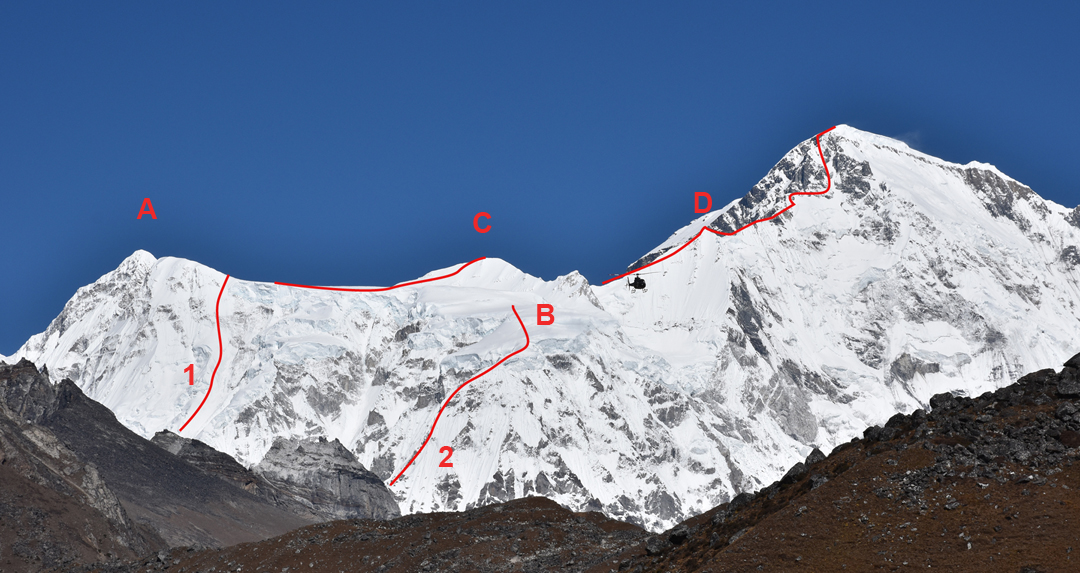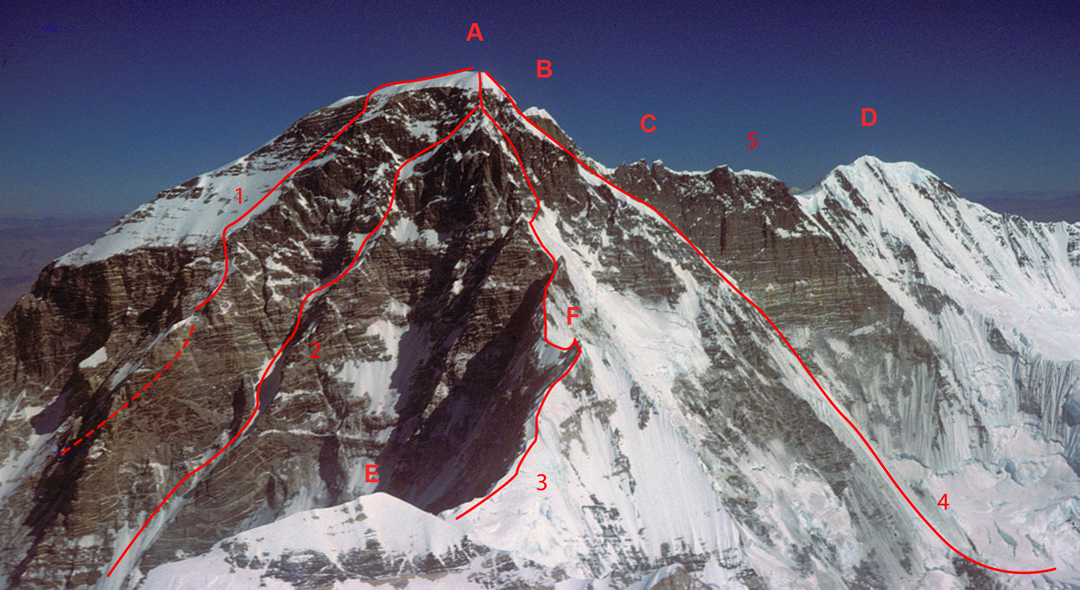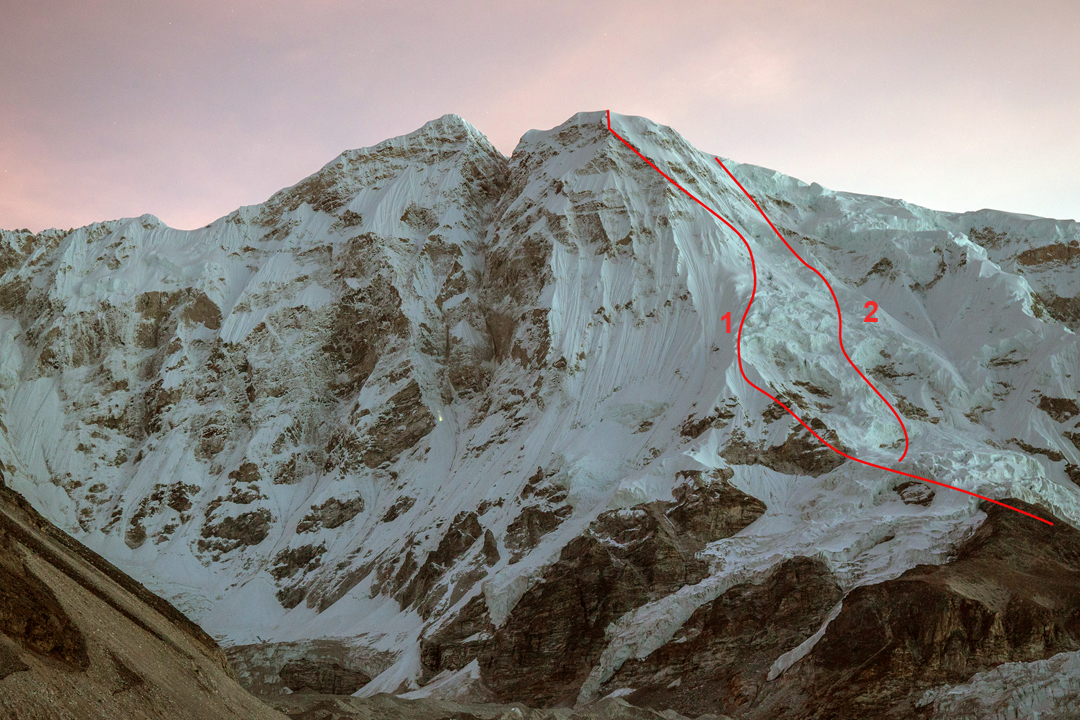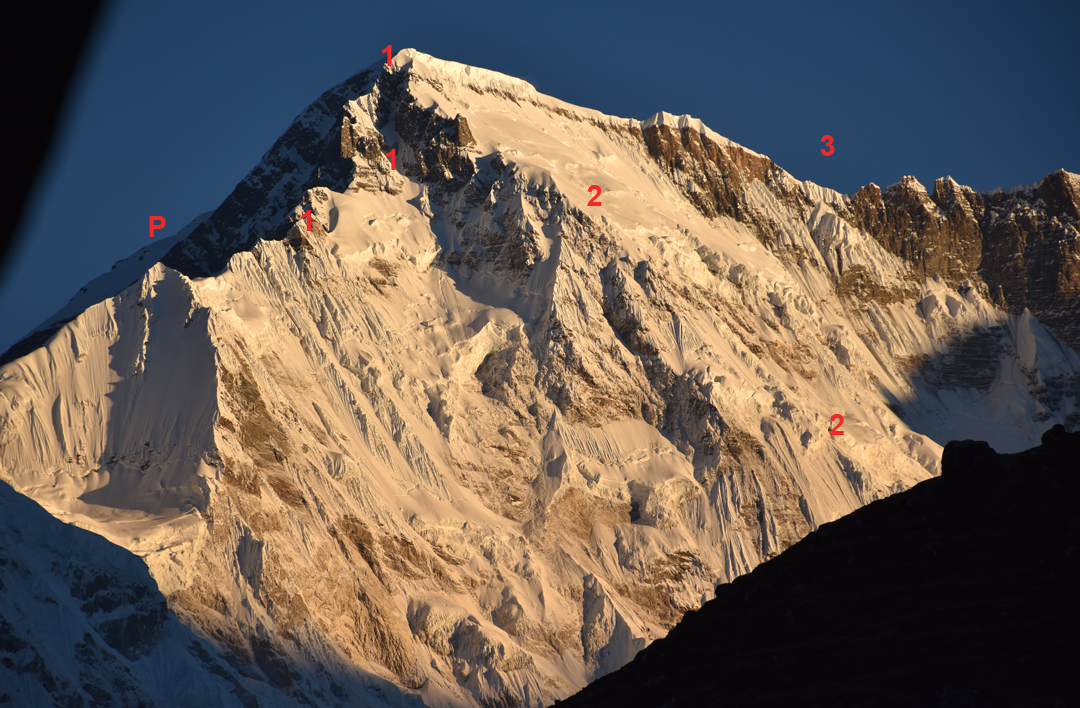Cho-oyu, South-southwest ridge
Nepal, Mahalangur Himal, Khumbu Section

At around 9 p.m. on June 7, a strong team composed primarily of Sherpas reached the 8,188m summit of Cho Oyu, completing the last major logical line on the mountain: the south-southwest ridge. The successful party was Chhangba Sherpa, Gelje Sherpa, Lakpa Temba Sherpa, Lakpa Tenji Sherpa, Ngima Ongda Sherpa, Tenjing Gyaljen Sherpa, and a 19-year-old Frenchman, Alasdair Mckenzie, who is attempting to become the youngest person to climb all the 8,000m peaks. (Cho Oyu was his 13th.) The ascent was carried out in siege style, with much of the route fixed to not far from the summit, and oxygen reportedly used from around 7,100m to the top and then on the descent to about 7,000m.
The quest to climb the south-southwest ridge has been long. In 1981, a Japanese team tried to access the main ridge via the south-southwest pillar of Lungsampa (6,500m). After making the first ascent of this peak, they reached 7,120m on the plateau east of the main ridge. The same route was attempted in 1983 by Italian climbers, but they failed to get higher than 6,500m.
In 1987, an American team also climbed Lungsampa, then switched to the face much farther left, to the right of the south ridge of Nangpai Gosum I. They climbed to 6,700m but abandoned the project after a huge snowstorm. A few days after that storm cleared, there was a remarkable attempt by Hans Eitel, part of a German team, who climbed Lungsampa solo, then continued to the south-southwest ridge, reaching a high point of 7,400m. (He is generally credited with the first ascent of Nangpai Gosum II.) In 1989, Korean and Swiss climbers also were defeated on the Lungsampa route, and the following year a Soviet expedition established five camps and reached 7,600m before retreating in abysmal weather.
The ridge was left alone until the winter of 2021–2022. The Chinese side of the mountain was closed that year, causing a huge loss in income for Nepalese agencies and Sherpas. Ostensibly looking for a route from Nepal that they could manage with clients, commercial operators considered the south-southwest ridge. A strong team of Sherpas took up the challenge and, using the 1987 American line up the face right of Nangpai Gosum I, reached around 7,600m. In the autumn, more Sherpas returned and, using the same approach, got as far as 7,300m. Autumn 2023 saw a five-member Russian team use the Lungsampa approach and reach 7,350m.
In late May 2024, another Sherpa team, from the Seven Summit Treks agency, placed a Camp 3 at around 7,000m on the plateau after climbing the Nangpai Gosum I route, then forced the route up the south-southwest ridge as far as 7,625m. However, they had run out of fixed rope and enough oxygen for a summit attempt, and they needed a rest. They returned to base camp. Meanwhile, the very strong Gelje Sherpa (K2 in winter, etc.) was in Kathmandu after guiding an Everest ascent. As he had made a previous attempt on the route, he was asked to help and immediately accepted.
With Gelje, a few other fresh Sherpas, and 1,000m of rope, a team set out from base camp on June 5 and climbed directly to Camp 3. The next day, they crossed the kilometer-wide plateau and made Camp 4 at 7,200m. On the 7th, they left in the dark and negotiated the first crux, a steep couloir with loose slabs and rockfall, at 7,500m, where the route breaks out onto the south face. On the second crux, a final rocky headwall, they overcame sometimes waist-deep snow in a couloir, managing to complete the difficulties before exhausting all their rope. Above, easier slopes led to the summit, which they reached at 9:10 p.m.
Descending through the night, they regained Camp 4 at 6 a.m. on June 8 and base camp by 10 p.m. that day. The five-kilometer-long ascent had a vertical gain of 2,500m. Above 7,400m, the difficulties were sustained on snow, ice, and mixed terrain.
—Lindsay Griffin, AAJ, and Rodolphe Popier, Himalayan Database




